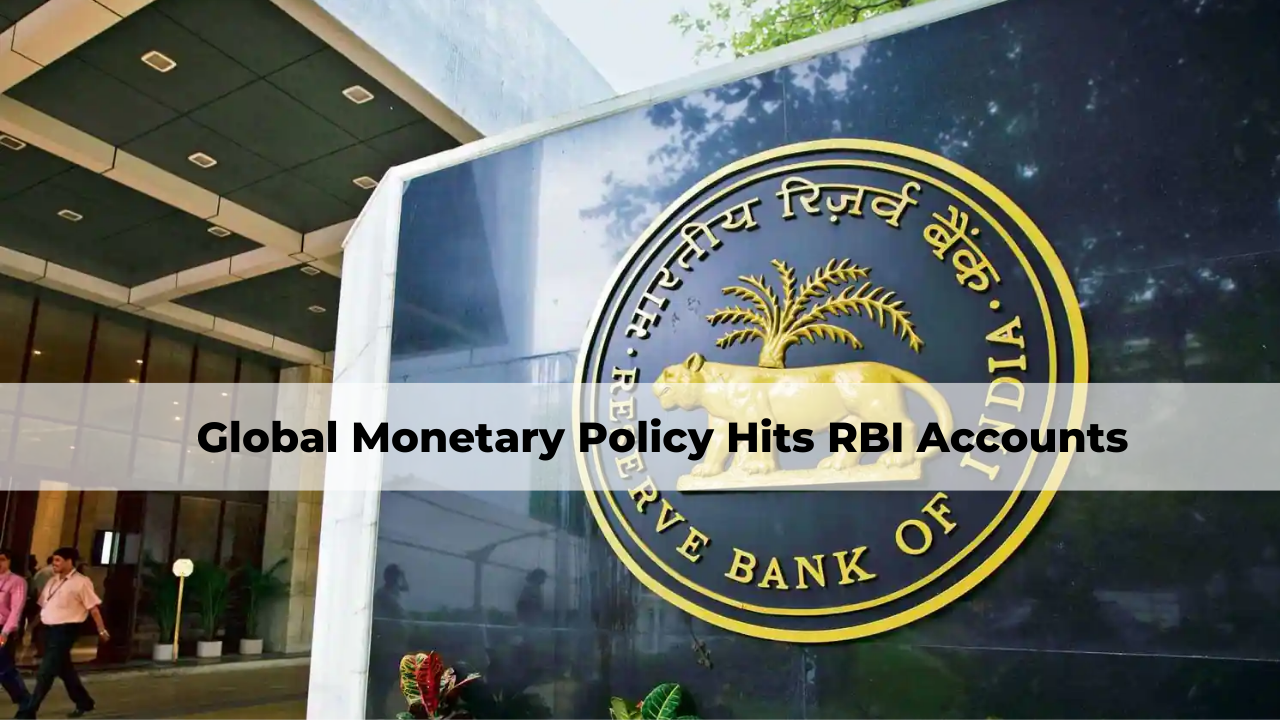Global Monetary Policy Hits RBI Accounts

Last Updated: 3rd June 2022 - 02:06 pm
The ongoing geopolitical conflict in Europe has imparted strong shocks that have the ability to cause a global economic slowdown and, simultaneously, keep inflation elevated. Negative externalities are already rippling through financial and commodity markets, the international trade and financial systems, supply chains and the global geopolitical order. Combined with tightening financial conditions to tackle elevated inflation levels, emerging market and developing economies (EMDEs) are likely to bear the brunt of the consequences.
The RBI notes that the scarring effects are larger for EMDEs due to human capital and investment losses, which may keep economic activity and employment below pre-pandemic trends right up to 2023. The near-term outlook, according to the RBI, is fluid, rapidly evolving, and extremely uncertain. Amid these adverse developments, the RBI notes that India is doing relatively better with recovery that is underway and improved macroeconomic prospects going forward. The RBI also highlighted bright prospects for the agriculture and allied sector with the forecast of a normal monsoon and terms of trade gains expected from exports.
However, though early indicators point to revival of economic activity across other sectors, the recovery needs to be carefully nurtured in order to boost consumer and business confidence, and private investment. The RBI also noted that though capacity utilization in several industries was moving closer to normal levels, rising input costs and persisting supply-side bottlenecks may delay a fuller recovery.
On the fiscal front, the thrust given to infrastructure and investment in the Union Budget 2022-23 is bound to play a major role in shaping the post Covid-19 recovery. The Pradhan Mantri Gati Shakti, which brings together infrastructure plans under various ministries under a common digital platform, is expected to improve efficiency in execution and reduce logistic cost.
With regards to monetary policy, the RBI will continue to follow a quick and light approach to liquidity management while maintaining adequate liquidity in the system to meet the credit needs of the productive sectors of the economy.
Sensitivity of inflation to input cost pressures
- According to the RBI, the hardening of global commodity prices is having more of an impact on headline WPI than headline CPI. However, the impact on CPI core is found to be more persistent.
- 100 bps change in overall global commodity prices leads to 2 bps change in headline CPI and 11 bps change in headline WPI.
- 100 bps change in non-food, non-fuel (core) global commodity prices leads to 4 bps change in core CPI and 9 bps change in core WPI.
- With regards to the pass-through from WPI to CPI, a 100 bps change in WPI leads to 26 bps change in headline CPI while a 100 bps change in core WPI leads to 33 bps change in core CPI.
Corporate tax cut shielded corporates from the pandemic:
- Indian corporates were shielded from the pandemic by the rationalization in conduct of business that focused on cost-saving and a corporate tax rate cut in September 2019. The tax cut was in line with other countries as observed across the OECD countries.
- Before the tax rate cut, the effective rate for the manufacturing sector was 27.8%, while for the non-manufacturing sector, it was higher at 30.5% on an average, impinging upon the competitiveness of Indian exports.
- According to the RBI, the net profit margin (NPM) of firms which enjoyed a tax cut of atleast 5% (compared to the pre-tax cut period average) was significantly higher in the manufacturing and non-manufacturing sectors. Additionally, the NPM improved significantly in the post-tax cut period.
- It was also found that the impact of the tax rate cut on profitability was stronger for the non-manufacturing sector than for the manufacturing sector.
A provision of Rs.1.15 trillion lowered the RBI’s surplus transfer to government to Rs.303 billion in FY2022 (transferred in FY2023). Most of the higher provision was due to the impact of sharp spike up in DM yields leading to drawdowns on the investment revaluation account. It is likely that FY2023 will see much more muted interest rate shifts, which should lead to lower drawdowns and lower provisions in FY2023 and, consequently, higher surplus transfer in FY2024.
- Performance Analysis
- Nifty Predictions
- Market Trends
- Insights on Market
Trending on 5paisa
Market Outlook Related Articles
Disclaimer: Investment in securities market are subject to market risks, read all the related documents carefully before investing. For detailed disclaimer please Click here.
 5paisa Research Team
5paisa Research Team
 Sachin Gupta
Sachin Gupta




